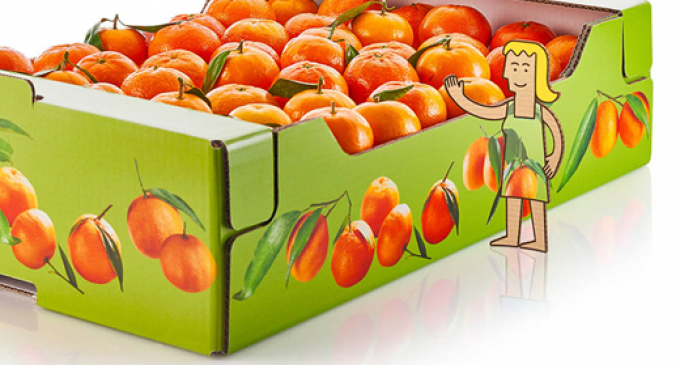Fruit Stays Fresh For Longer in Corrugated Trays

Corrugated trays keep fruit fresher and safer than reusable plastic crates (RPCs) and can significantly reduce contamination from pathogenic and spoilage microorganisms, according to scientific research. The research by the University of Bologna found that corrugated trays ensured better quality packed fruits and a longer shelf-life, reducing fruit microbial cross contamination. This decreases the risk of food-borne illnesses and increases fruit shelf life, contributing to the fruit’s freshness, scent, appearance and taste.
Microbiological contamination of fruit and vegetables is a major concern for retailers. Contamination can have two characteristic effects. In case of pathogen bacteria, food safety is at risk. In the case of spoilage bacteria, it will have an impact on shelf life. In both cases, the role of packaging can be critical.
The research was led by Professor Rosalba Lanciotti at the University of Bologna’s Department of Agricultural and Food Sciences. It looked at the exchange of microbes between produce and packaging and vice versa. The study was particularly interested in how differences in packaging materials can influence the cross contamination.
The results revealed statistically significant differences in the microbiological quality between produce packed in (RPCs) and corrugated trays.
The researchers packed peaches in deliberately contaminated packaging, both corrugated trays and RPCs, with the same number of Escherichia coli, Saccharomyces cerevisiae and Pseudomonas spp. and they then measured the transfer of the microorganisms to packaged fruit. The tests showed that the fruit reached contamination levels generally associated to fruit spoilage 48 to 72 hours earlier in plastic crates than in corrugated trays.
All peaches were washed with tap water, then sterilised with a sodium solution, rinsed with sterilised water and then air dried before entering the tests. Contributing factors such as the temperature during storage, the length of time before sale, and the superficial damage on each peach were also taken into consideration. The results of the tests showed that all of them influenced the microbial transfer from packaging material to fruit, but the transferring of the spoilage microorganisms considered was always lower for corrugated trays.
The tests also showed that in some conditions during the trials (i.e. high storage temperature) up to 95% of the peaches packed in RPCs were contaminated with E. coli after 48 hours when packaged in deliberately contaminated plastic crates. By contrast, the E. coli contamination level never exceeded 25% of the peaches packed in corrugated contaminated with the same levels of microorganisms.
The tests enabled Professor Lanciotti and her team (mainly Dr Francesca Patrignani, and Dr Lorenzo Siroli) to conclude that peaches packed in corrugated reach consumers in a safer and fresher state than those in plastic crates.
Jan Gramsma, FEFCO’s Market and Environment Director, says the tests were just one of the many confirmations that corrugated is cleaner and safer. “When it comes to preventing microbiological contamination, the science is in no doubt: corrugated board is far superior to RPC,” he points out. “Both the European Food Safety Agency and the US Centre for Disease Control and Prevention say fresh produce can be a source of contamination leading to foodborne Illnesses. Until now, we did not have undeniable proof that packaging was a factor. Our message to retailers is simple and clear: corrugated keeps produce fresh and safe.”
The research comes as other concerns have been raised recently over the hygiene of RPCs. Last November, the Department of Food Science at the University of Arkansas showed that typical industry cleaning procedures failed to sanitise RPCs. The research team led by Dr Steven Ricke found Salmonella cells on the crates even after cleaning. He noted that bacteria hide in the cracks and crevices of the crate’s surface, making it harder for industrial sanitisers to reach them. Dr Ricke said industry claims that crates are “99.5%” clean after sanitisation sound impressive, but that the missing 0.5% could hold millions of cells.

































